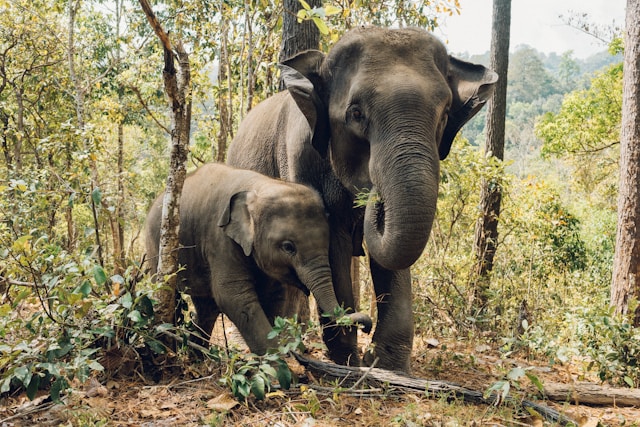by Deep Green Resistance News Service | Apr 2, 2013 | Toxification
By Edward Wong / The New York Times
Outdoor air pollution contributed to 1.2 million premature deaths in China in 2010, nearly 40 percent of the global total, according to a new summary of data from a scientific study on leading causes of death worldwide.
Figured another way, the researchers said, China’s toll from pollution was the loss of 25 million healthy years of life from the population.
The data on which the analysis is based was first presented in the ambitious 2010 Global Burden of Disease Study, which was published in December in The Lancet, a British medical journal. The authors decided to break out numbers for specific countries and present the findings at international conferences. The China statistics were offered at a forum in Beijing on Sunday.
“We have been rolling out the India- and China-specific numbers, as they speak more directly to national leaders than regional numbers,” said Robert O’Keefe, the vice president of the Health Effects Institute, a research organization that is helping to present the study. The organization is partly financed by the United States Environmental Protection Agency and the global motor vehicle industry.
What the researchers called “ambient particulate matter pollution” was the fourth-leading risk factor for deaths in China in 2010, behind dietary risks, high blood pressure and smoking. Air pollution ranked seventh on the worldwide list of risk factors, contributing to 3.2 million deaths in 2010.
By comparison with China, India, which also has densely populated cities grappling with similar levels of pollution, had 620,000 premature deaths in 2010 because of outdoor air pollution, the study found. That was deemed to be the sixth most common killer in South Asia.
The study was led by an institute at the University of Washington and several partner universities and institutions, including the World Health Organization.
Read more from The New York Times: http://www.nytimes.com/2013/04/02/world/asia/air-pollution-linked-to-1-2-million-deaths-in-china.html?_r=1&
by Deep Green Resistance News Service | Mar 29, 2013 | Biodiversity & Habitat Destruction
By Emily Ford / The Times
About 28,000 rivers have disappeared from China’s state maps, an absence seized upon by environmentalists as evidence of the irreversible natural cost of developmental excesses.
More than half of the rivers previously thought to exist in China now appear to be missing, according to the 800,000 surveyors who compiled the first national water census, leaving Beijing fumbling to explain the cause.
Only 22,909 rivers, covering an area of 100 square kilometres were located by surveyors, compared with the more than 50,000 present in the 1990s, a three-year study by the Ministry of Water Resources and the National Bureau of Statistics found.
Officials blame the apparent loss on climate change, arguing that it has caused waterways to vanish, and on mistakes by earlier cartographers. But environmental experts say that the disappearance of the rivers is a real and a direct manifestation of headlong, ill-conceived development, where projects are often imposed or approved without public consultation.
The United Nations considers China one of the 13 countries most affected by water scarcity, as industrial toxins have poisoned historic water sources and were blamed last year for causing the Yangtze to turn an alarming shade of red. This month the carcasses of about 16,000 dead pigs dumped in the river have been pulled from its waters, and 1,000 dead ducks were found dumped this week in the Nanhe River in the southwestern Sichuan province.
Ma Jun, a water expert at the Institute of Public and Environmental Affairs, said that the missing rivers were a cause for “great attention” and underscored the urgent need for a more sustainable mode of development.
“There might be some disparity [in the number of rivers] due to different research methods. However, the disappearance of rivers is the reality. It is really happening in China because of the over-exploitation of river resources,” Mr Ma said. “One of the major reasons is the over-exploitation of the underground water reserves, while environmental destruction is another reason, because desertification of forests has caused a rain shortage in the mountain areas.”
Large hydroelectric projects such as the Three Gorges Dam, which diverted trillions of gallons of water to drier regions, were likely to have played a role, Mr Ma said.
The census charted a decline in water quality, citing the “severe over-exploitation” of underground water reserves by 60 of its biggest cities.
The report came as Li Keqiang, the new premier, gave a speech in which he pledged greater transparency on pollution, which Beijing fears is a potential catalyst for social unrest.
“We must take the steps in advance, rather than hurry to handle these issues when they have caused a disturbance in society,” Mr Li was quoted by state media as saying.
The missing rivers provoked wistful recollections among Chinese internet users, most of whom will have witnessed dizzying urbanisation.
“The rivers I used to play around have disappeared, the only ones left are polluted, we can’t eat the fish in them, they are all bitter,” a person using the name Pippi Shuanger wrote on Weibo, the Chinese version of Twitter.
Despite water shortages, the threat of floods is a problem for much of the Chinese mainland, with two thirds of the population living in flood-prone areas. Flash floods caused by heavy rain claimed the lives of 77 people in Beijing last July.
From The Times: http://www.thetimes.co.uk/tto/environment/article3725724.ece

by Deep Green Resistance News Service | Feb 21, 2013 | Repression at Home
By Fred Pearce / Yale Environment 360
Where is Sombath Somphone? With every day that passes, the fate of one of south-east Asia’s most high-profile environmental activists, who was snatched from the streets of Laos in December, becomes more worrisome.
His case has been raised by the State Department and countless NGOs around the world. But the authorities in Laos have offered no clue as to what happened after Sombath was stopped at a police checkpoint on a Saturday afternoon in the Lao capital of Vientiane as he returned home from his office. It looks increasingly like state kidnap — or worse, if recent evidence of the state-sponsored killings of environmental campaigners in other countries is anything to go by.
Personal danger is not what most environmentalists have in mind when they take up the cause of protecting nature and the people who rely on it in their daily lives. But from Laos to the Philippines to Brazil, the list of environmentalists who have paid for their activism with their lives is growing. It is a grim toll, especially in the last year.
One of the most grisly cases occurred last year in Rio de Janeiro on the final day of the Rio+20 Earth Summit. On the afternoon of June 22, delegates from throughout the world — me included — were preparing to leave for the airport as Almir Nogueira de Amorim and his friend João Luiz Telles Penetra were setting sail for a fishing trip in the city’s Guanabara Bay.
The two men, besides being fishermen, were leaders of AHOMAR, the local organization of seamen, which they had helped set up three years earlier to fight the construction of gas pipelines across the bay to a new refinery run by the Brazilian national oil company Petrobras. The pipelines, they said, would cause pollution, and the engineering works would destroy fisheries.
The issue they were raising — protecting the livelihoods of people who used natural resources — was at the heart of the Rio conference’s agenda for sustainable development. But someone in Rio saw it as a threat. Two days later, the bodies of the two men had been found. One was washed up on the shore, hands and feet bound by ropes. The other was found at sea, strangled and tied to the boat, which had several holes in the hull.
This was no isolated assassination. In the three years since AHOMAR was set up, two other campaigners had been murdered. To date nobody has been convicted of any of the offenses. The refinery is expected to open early next year.
The month before the two Brazilian fishermen were murdered, a civil servant on the other side of the world who was campaigning against a planned hydroelectric dam on the southern Filipino island of Mindanao was shot death. Margarito Cabal was returning home from visiting Kibawe, one of 21 villages scheduled to be flooded by the 300-megawatt Pulangi V hydroelectric project.
Cabal’s assailant escaped and remains unknown. No prosecution has followed, but attention has focused on government security forces. According to the World Organization Against Torture, an international network based in Switzerland that has taken up the case, Filipino soldiers had for several weeks been conducting military operations in and around Kibawe and had attacked peasant groups opposing the dam. If the soldiers did not do the deed, they certainly helped create an atmosphere in which environmentalists were seen as a target for violence.
Cabal is the thirteenth environmentalist killed in the Philippines in the past two years. Seven months earlier, a Catholic missionary was murdered after opposing local mining and hydro projects. “The situation is getting worse,” says Edwin Gariguez, the local head of Caritas, the Catholic aid charity.
And it’s getting worse in other nations as well. NGOs such as Human Rights Watch agree that 2012 was also a new low for human rights in Cambodia, with campaigners against illegal logging and land grabs targeted by state security personnel and by gangsters working for companies harvesting the nation’s natural resources.
One of those campaigners was Chut Wutty, a former soldier and one-time Cambodian activist with Global Witness, a UK-based NGO that highlights links between environmental exploitation and human rights abuses. When Global Witness was expelled from the country a few years ago, Wutty formed the Natural Resource Protection Group to help Cambodian villagers confront illegal loggers.
But last April, Wutty was shot dead, apparently by a group of military police that he encountered while taking local journalists to see illegal loggers in the west of the country. According to a government report, Wutty’s assailant was killed at the scene, allegedly by a forest ranger. A provincial court recently abandoned an investigation into Wutty’s murder and released the ranger. One of the journalists, who fled into the forest when the shooting started, says she does not believe the official version of what happened, and human rights groups have also said they find it implausible.
Criminality is at the heart of much of the destruction of the world’s forests. A recent report from the UN Environment Programme concluded that up to 90 percent of the world’s logging industry was in one way or another outside the law. In such circumstances, violence against those who try to protect the forests can become endemic.
Read more from The Guardian: http://www.guardian.co.uk/environment/2013/feb/21/activism

by Deep Green Resistance News Service | Feb 20, 2013 | Agriculture, Biodiversity & Habitat Destruction, NEWS
By Jeremy Hance / Mongabay
A biofuel plantation near Yala National Park has landed Lanka Orex Leasing Company PLC (LOLC) in Sri Lanka’s highest court. Environmentalists say the company is illegally bulldozing Asian elephant habitat, including scrubland and tree stands, near the buffer zone of Yala National Park for gliricidia (Gliricidia sepium) biofuel plantation.
“This is going to be a permanent cultivation within the home range of few elephant herds,” Vimukthi Weeratunga, Environmental Foundation Limited (EFL)’s head of operations and environmental scientist, told mongabay.com. “When we take the elephant land by developing this area, elephants will move to nearby villages to raid crop as they cannot use this area for their normal activities. This is exactly the way that human-elephant conflict increased in the other parts of Sri Lanka.”
Located near the buffer zone of Yala National Park, Weetatunga states that company never conducted an environmental impact assessment (EIA), transgressing Sri Lankan law. In addition, the Sri Lanka’s Forest Department has repeatedly denied leasing the land to the company in local press, instead it gave 500 hectares (1,250 acres) to local dairy farmers for rearing cattle. Lanka Orex Leasing Company PLC was merely supposed to provide “technical assistance” to the farmers.
The site in question is currently used by smallscale farmers for cattle and farming, but Weetatunga says that this doesn’t mean the ecosystem is degraded. Instead, he says smallscale farming and livestock in the area are actually important for elephants as opposed to a monoculture plantation.
“Shifting cultivation is a traditional farming practice by clearing some scrubland and leave after the harvest for forest to re-grow. This practice is ideal for elephants to thrive as they get high quality fodder after people leave to regrow,” he explains. Between 2,000 and 4,500 Asian elephants (Elephas maximus) roam Sri Lanka’s forests. The species is currently listed as Endangered by the IUCN Red List.
The area in question is home to many other species as well, including leopards, fishing cats, sloth bears, pangolins, and a large variety of birds.
Many have noted in Sri Lankan press the irony of destroying elephant habitat, including forest lands, for so-called green energy made from biofuels. Gliricidia is a woody plant that can be burned in a biofuel power plant.
The Environmental Foundation Limited (EFL) is currently awaiting a court date next month with Lanka Orex Leasing Company over the habitat clearing.
“We are asking [for an] injunction of current activities,” Weetatunga says. “We are also seeking compensation for their action if we win the case.”
Last year, environmentalists in Sri Lanka caught U.S. food giant Dole clearing forest in Somawathiya National Park for a banana plantation. Dole denied it was inside the park for months, but finally abandoned the project after threat of lawsuit.
Like many Southeast Asian countries, Sri Lankan is currently undergoing a tension between large-scale industrial projects, such as monoculture plantations, and local farming and conservation efforts.

by Deep Green Resistance News Service | Feb 10, 2013 | Biodiversity & Habitat Destruction
By Mongabay
China’s decision to open up collective forest for sale by individuals to outside interests will put 345,700 hectares or 15 percent of the giant panda’s remaining habitat at risk, warns a letter published in the journal Science.
The letter, authored by a team of researchers including scientists from Conservation International and Chinese institutions, says that China’s land tenure reform will open key panda habitat to logging and conversion by allowing collectively-owned land to be transferred or leased to commercial enterprises. The letter cites a recent case where a timber company purchased 15,000 ha of forest in Chongqing Province.
“This change puts these vital habitats potentially under threat from commercial logging, increased collection of firewood and non-timber forest products by outside enterprises, and other commercial development activities,” said co-author Russell Mittermeier, a biologist who serves as President of Conservation International (CI), in a statement. “Sadly, it would threaten to deforest, degrade or disturb up to 15% of the remaining giant panda habitat.”
“The reform contradicts the great steps the Chinese government has taken to conserve the giant panda in recent decades,” added Li Zhang, a scientist with Conservation International China. “The government has designated 63 panda reserves which constitute over 60% of the panda’s remaining wild habitat, improved the species’ endangered habitats by reforesting or restoring native forests and restricting human access to these, increased the number and capacity of forestry staff in these areas, strictly banned hunting of the species, and pioneered captive breeding techniques. As a result of these efforts, the official number of giant pandas in the wild has increased to nearly 1,600 from less than 1,000 in the late 1980s. It would be inexcusable to reverse this great achievement for these majestic creatures and our country’s recent conservation efforts.”
The giant panda is classified as critically endangered on the IUCN Red List due to habitat loss and hunting. The species has been driven to extinction in Vietnam and Myanmar. In China it’s habitat — old growth forests — has fallen by roughly 60 percent since 1950.



